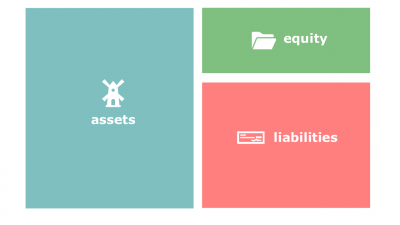Difference between revisions of "Basic accounting equation"
(→Related coursework) |
|||
| Line 9: | Line 9: | ||
*[[Bookkeeping]]. Recording, filing, and retrieving of [[financial data]], as well as producing those [[financial report]]s that are required by laws. | *[[Bookkeeping]]. Recording, filing, and retrieving of [[financial data]], as well as producing those [[financial report]]s that are required by laws. | ||
| − | ==Related | + | ==Related lectures== |
*[[Bookkeeping Quarter]]. | *[[Bookkeeping Quarter]]. | ||
[[Category: Septem Artes Administrativi]][[Category: Articles]] | [[Category: Septem Artes Administrativi]][[Category: Articles]] | ||
Latest revision as of 19:29, 4 January 2019
Basic accounting equation (or, simply, accounting equation; hereinafter, the byby) is Assets = Liabilities + Owner's equity; the same equation can be expressed as Owner's equity = Assets less Liabilities, etc. The double-entry method of bookkeeping is based on this equation.
Definitions
According to College Accounting: A Practical Approach by Slater (13th edition),
Related concepts
- Bookkeeping. Recording, filing, and retrieving of financial data, as well as producing those financial reports that are required by laws.
